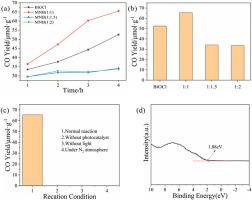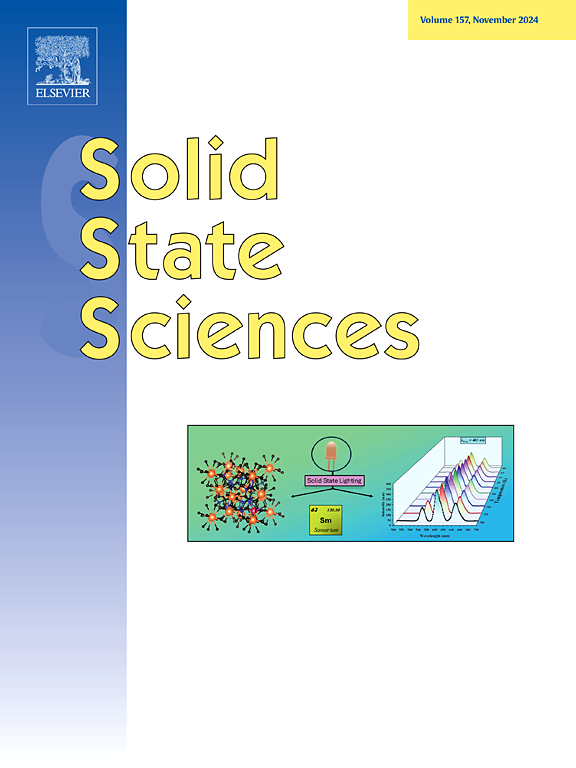促进CO2-to-CO转化:MNB(X)光催化剂实现高效的光催化还原
IF 3.3
3区 化学
Q2 CHEMISTRY, INORGANIC & NUCLEAR
引用次数: 0
摘要
光催化二氧化碳(CO2)转化为增值化学品是解决环境挑战和全球能源危机的一个有前途的战略。本研究通过水热法合成了一种具有富氧空位(OVs)的薄层结构的biocl基光催化剂。为了进一步提高其光催化性能,将多孔碳材料集成到BiOCl基质中。在所制备的复合材料中,MNB(1:1)光催化剂的CO2还原活性最高,在模拟阳光照射4 h后CO的产率达到65.47 μ mol·g−1。这种优异的性能可归因于电荷分离效率的提高和可见光吸收范围的扩大。此外,多孔碳的引入显著增加了复合材料的比表面积和CO2吸附能力,从而为光催化反应提供了更容易获得的活性位点。这项工作为合理设计低成本、高效、稳定的biocl基光催化剂提供了有价值的见解,用于太阳能驱动的二氧化碳减排。本文章由计算机程序翻译,如有差异,请以英文原文为准。

Boosting CO2-to-CO conversion: MNB(X) photocatalyst enables highly efficient photocatalytic reduction
The photocatalytic conversion of carbon dioxide (CO2) into value-added chemicals represents a promising strategy for addressing both environmental challenges and the global energy crisis. In this study, a BiOCl-based photocatalyst with a thin-layered architecture enriched with oxygen vacancies (OVs) was synthesized via a hydrothermal approach. To further enhance its photocatalytic performance, a porous carbon material was integrated into the BiOCl matrix. Among the prepared composites, the MNB(1:1) photocatalyst exhibited the highest activity for CO2 reduction, achieving a CO production rate of 65.47 μ mol·g−1 after 4 h of irradiation under simulated sunlight. This superior performance could be attributed to the enhanced charge separation efficiency and expanded visible-light absorption range. Additionally, the introduction of porous carbon significantly increased the specific surface area and CO2 adsorption capacity of the composite, thereby offering more accessible active sites for photocatalytic reactions. This work provided valuable insights into the rational design of low-cost, efficient, and stable BiOCl-based photocatalysts for solar-driven CO2 reduction.
求助全文
通过发布文献求助,成功后即可免费获取论文全文。
去求助
来源期刊

Solid State Sciences
化学-无机化学与核化学
CiteScore
6.60
自引率
2.90%
发文量
214
审稿时长
27 days
期刊介绍:
Solid State Sciences is the journal for researchers from the broad solid state chemistry and physics community. It publishes key articles on all aspects of solid state synthesis, structure-property relationships, theory and functionalities, in relation with experiments.
Key topics for stand-alone papers and special issues:
-Novel ways of synthesis, inorganic functional materials, including porous and glassy materials, hybrid organic-inorganic compounds and nanomaterials
-Physical properties, emphasizing but not limited to the electrical, magnetical and optical features
-Materials related to information technology and energy and environmental sciences.
The journal publishes feature articles from experts in the field upon invitation.
Solid State Sciences - your gateway to energy-related materials.
 求助内容:
求助内容: 应助结果提醒方式:
应助结果提醒方式:


